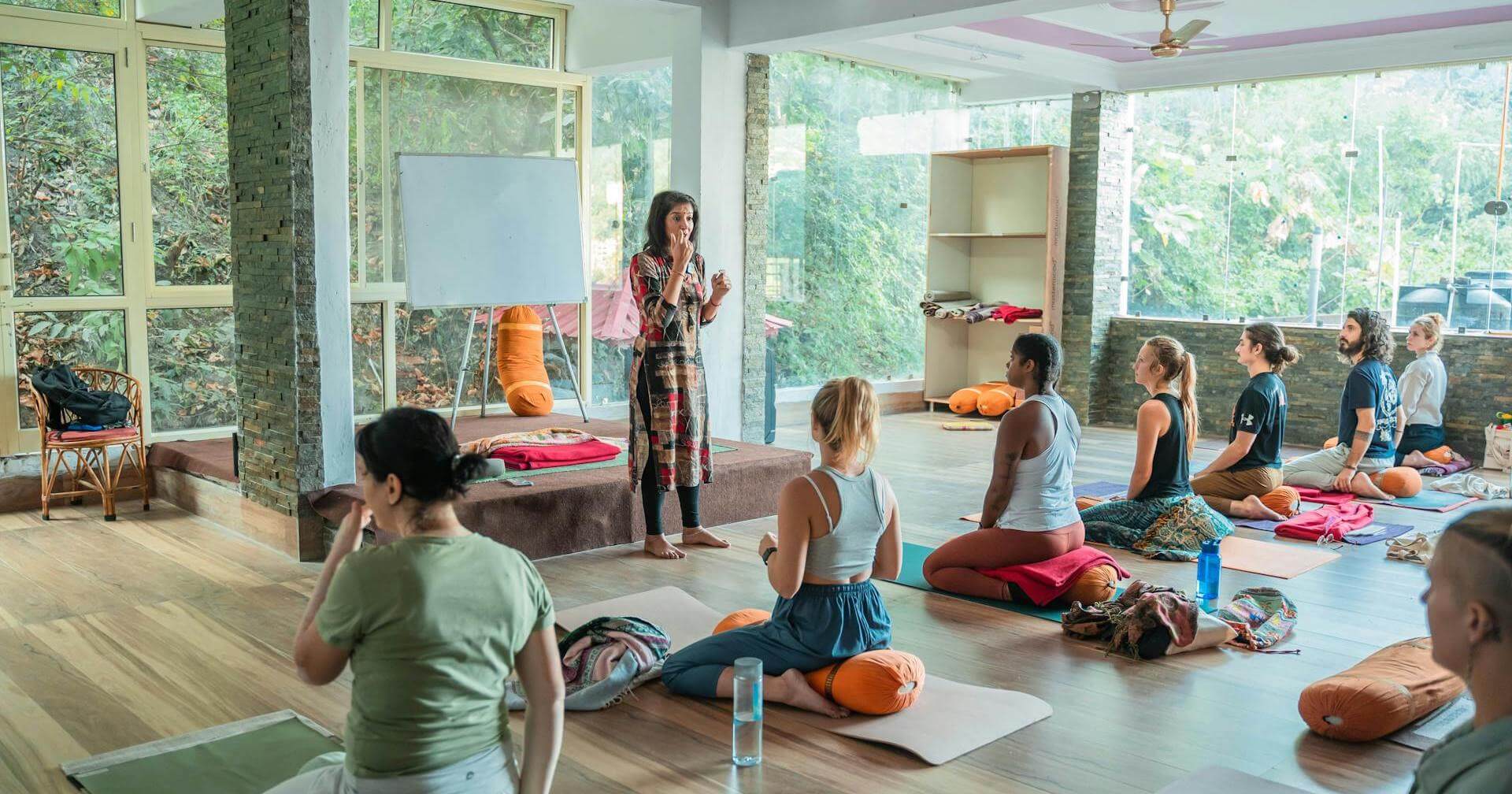
Professional Development As A Yoga Teacher: Why It’s Important & How To Do It
Let's be honest; you can learn only so much on a 200-hour yoga teacher training course. And one thing you'll learn is that 200 hours is just the beginning!
While you can jump straight into teaching upon graduation, continuing education should be a key focus for any new yoga teacher.
This doesn't mean you must immediately sign up for an advanced 300-hour yoga teacher training. Instead, there are many avenues for professional development, which you can do alongside building your teaching career.
In this article, I'll share how professional development can evolve your teaching and the 5 most impactful types of continued education for yoga instructors.
Why Professional Development Is Essential For Yoga Teachers
Continued learning helps you refine your teaching skills and develop a comprehensive understanding of yoga. This is crucial as most 200-hour YTTs skim the surface of key yoga topics like philosophy, anatomy, and teaching methodology.
Continued education helps you understand each area on a deeper level. This will enrich your teaching by allowing you to create a higher-quality and more well-rounded experience for your yogis.
Continued education is also a great way to:
- Master those tricky asanas
- Gain confidence in giving adjustments
- Explore new yoga styles that your 200-hour didn't cover
Furthermore, professional development adds credibility and professionalism to your profile. As you gain more knowledge, you can expand your offerings and scale your yoga business.
Yoga Alliance Continuing Education
Another reason why yoga teachers should consider continued education is because it is a requirement for Yoga Alliance registration.
This means if you register as a 200-hour RYT, you must complete 75 hours of CE every three years to keep your credentials active.
While 45 hours of these can be earned directly through teaching yoga, you must also complete 30 hours of accredited study directly related to one of Yoga Alliance's educational categories.
5 Ways To Grow As A Yoga Teacher
A 300-hour advanced YTT is a popular continued education choice for yoga teachers as it allows you to register as a RYT® 500. This accreditation shows you have a depth of knowledge and skills.
However, these courses are costly, both in time and money. And the truth is, if you've just completed your 200-hour course, you will need some time to process everything you've learnt and put it into practice.
That's why, as a new yoga teacher, you should focus on professional development activities you can do alongside building your teaching career.
Here are some ways I increased my knowledge and skills during my first years teaching yoga:
1. Take Short Courses
As we evolve as yoga teachers, we naturally feel called to particular styles and niches. This is where short courses come in.
Short courses focusing on niche areas such as trauma-informed yoga, chair yoga, kids' yoga, or yoga for athletes expand your skillset to reach specific populations. Becoming a 'specialist' can increase your credibility and income
Meanwhile, courses like Yoga Nidra, sound healing, or Yin Yoga allow you to introduce new elements to your existing classes and, thus, create a more transformative experience for your yogis.
2. Attend Workshops
Workshops are a fantastic way to deepen your existing skills, learn new ones, and keep your passion for teaching alive. That's why, throughout my entire yoga teaching career, I've regularly attended workshops.
Whenever I've found myself stuck in a rut or lacking enthusiasm for teaching, I've signed up for a workshop. By engaging with new ideas and techniques, workshops inspire me and refresh my approach to my classes.
The workshops I've attended range from anatomy to adjustments to inversions. And here's something many yoga teachers don't know - some yoga workshops count towards your Yoga Alliance CE hours.
3. Maintain A Regular Self-Practice
Here's another thing I do when I lack creativity and enthusiasm for teaching: I dive deep into my personal practice.
Regular self-practice keeps me connected to yoga, allowing me to always present myself as my most authentic self when teaching.
But alongside practising on my own, I find attending classes of other yoga teachers extremely beneficial.
As we all have different teaching styles, I always walk away from a yoga class with fresh inspiration. It's not about copying other teachers' sequences but rather about picking up tips and ideas to incorporate into your own flows.
I like to practise regularly with one core teacher, but I also like to try new teachers and studios. I find there is always something to learn from every yoga teacher, even if it's what NOT to do!

4. Dive Deeper Into Yoga Philosophy
One subject that most 200-hour YTTs skim over is yogic philosophy. You may know about the yamas and niyamas, but yogic philosophy goes well beyond this.
So, one way to grow professionally as a yoga teacher is to study ancient yogic texts, such as Patanjali's Yoga Sutras, the Bhagavad Gita, and the Upanishads.
Many modern translations of these books include commentary to help you better understand the key concepts and principles.
This increased understanding will help you grasp yoga's full context and significance, creating a more authentic and holistic experience for your students.
5. Explore Similar Practices
Here's one for the more experienced yoga teachers.
When you've been teaching for several years, you may find times when your interest in yoga fades, and that's totally ok.
While you may get fed up with sun salutations, one thing that will always remain is your interest in wellness and personal development.
And here's the thing—the world of wellness and personal development is huge, and a lot of it complements yoga—after all, yoga is a holistic practice.
So, an alternative way to grow as a yoga teacher and keep your passion alive is to explore similar practices you're interested in. This could be:
- Ayurveda
- Aromatherapy
- Thai massage
- Dance
- Crystal healing
All these practices complement yoga, meaning you can incorporate them into your classes and workshops.
For example, if you study Thai massage, you can include some assisted stretching or self-massage in your classes. Or, if you learn about aromatherapy, you could bring soothing scents into the studio to help your yogis drop deeper into savasana.
Final Thoughts
While the foundational 200-hour yoga teacher training course is a valuable starting point, it only scratches the surface of what yoga offers.
Continued education is not just an add-on but a vital component of your professional growth as a yoga teacher. By embracing these various forms of professional development, you can refine your skills, stay inspired, and enhance your yogis' learning experience.


